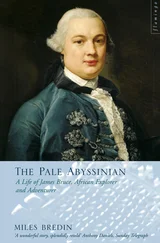Demetrius Boulger - The Life of Yakoob Beg; Athalik Ghazi, and Badaulet; Ameer of Kashgar
Здесь есть возможность читать онлайн «Demetrius Boulger - The Life of Yakoob Beg; Athalik Ghazi, and Badaulet; Ameer of Kashgar» — ознакомительный отрывок электронной книги совершенно бесплатно, а после прочтения отрывка купить полную версию. В некоторых случаях можно слушать аудио, скачать через торрент в формате fb2 и присутствует краткое содержание. ISBN: , Жанр: foreign_antique, foreign_prose, на английском языке. Описание произведения, (предисловие) а так же отзывы посетителей доступны на портале библиотеки ЛибКат.
- Название:The Life of Yakoob Beg; Athalik Ghazi, and Badaulet; Ameer of Kashgar
- Автор:
- Жанр:
- Год:неизвестен
- ISBN:http://www.gutenberg.org/ebooks/33712
- Рейтинг книги:5 / 5. Голосов: 1
-
Избранное:Добавить в избранное
- Отзывы:
-
Ваша оценка:
- 100
- 1
- 2
- 3
- 4
- 5
The Life of Yakoob Beg; Athalik Ghazi, and Badaulet; Ameer of Kashgar: краткое содержание, описание и аннотация
Предлагаем к чтению аннотацию, описание, краткое содержание или предисловие (зависит от того, что написал сам автор книги «The Life of Yakoob Beg; Athalik Ghazi, and Badaulet; Ameer of Kashgar»). Если вы не нашли необходимую информацию о книге — напишите в комментариях, мы постараемся отыскать её.
The Life of Yakoob Beg; Athalik Ghazi, and Badaulet; Ameer of Kashgar — читать онлайн ознакомительный отрывок
Ниже представлен текст книги, разбитый по страницам. Система сохранения места последней прочитанной страницы, позволяет с удобством читать онлайн бесплатно книгу «The Life of Yakoob Beg; Athalik Ghazi, and Badaulet; Ameer of Kashgar», без необходимости каждый раз заново искать на чём Вы остановились. Поставьте закладку, и сможете в любой момент перейти на страницу, на которой закончили чтение.
Интервал:
Закладка:
The great drawback in the geographical position of Kashgar, is the want of a cheap and convenient outlet by water. The country itself suffers in a less degree from the same cause, but with a more perfect system of irrigation, the rivers, such as the Artosh, &c., which in spring carry down the mountain snows, might be made to give a more extended supply throughout western Kashgar at all events. The climate is equable, and the people suffer from no very prevalent disease, except in the more mountainous parts, and in Yarkand, where goitre is of frequent occurrence. The people themselves seem to be frugal and honest, but indeed there are so many races to be met with in this "middle land," that no general description can be given of them all. The Andijanis, or Khokandian merchants, are the most prosperous class in the community, and they appear to be, from all accounts, possessed of more than an average amount of business capacity in the arts of buying and selling. The Tarantchis are the descendants of Kashgarian labourers imported by the Chinese into Kuldja in 1762, and there is still both in the army and in the state a large number of Khitay remaining, who were permitted to pursue in secret the observances of their religion. The other races are ill disposed towards them, and attribute all the vices they can think of to their doors. But these Khitay managed to efface themselves in the country, and although they formed a very important minority among the males, they never appear to have been regarded in the light of a possible danger when their brethren from China should draw near. In addition to the native Kashgari, and these two important elements just mentioned, there are numerous immigrants from the border states, particularly from Khokand, to the people of whom Yakoob Beg naturally manifested especial favour. We have now given at some length a description of the geographical features of Kashgar, and are about to follow it up with an ethnological description as well as a historical statement of the past features of the same region. It is hoped that these preliminary chapters will clear the way from some obscurity for a correct appreciation of the career of the late Athalik Ghazi.
Kashgaria may be said to be a portion of Asia which possesses some great advantages of position and very considerable resources, but by a singularly hard fortune, except for the brief period of Chinese rule in modern times, it has been so distracted by intestine disturbances that it has retrograded further and further with each year. It is quite possible that its natural wealth has been too hastily taken for granted, and that it does not possess the necessary means of restoring itself in some degree to its former position. This is quite possible, but the best authorities at our disposal seem to point to a more promising conclusion, and to justify us in assuming that the position, natural resources, and general condition of Kashgar will enable a strong and settled rule to raise it into a really important and flourishing confederacy.
CHAPTER II.
ETHNOGRAPHICAL DESCRIPTION OF KASHGAR
In the extensive region stretching from the Caspian and Black Seas to the Kizil Yart and Pamir plateaus, and from the Persian Gulf to Siberia, the two great families, the Aryan and the Turanian, have in past centuries striven for supremacy. The latter, embracing in its bosom in this part of the world the more turbulent and warlike tribes, succeeded in subjecting those who claimed the same parent stock as European nations. The Tajik or Persian is the chief representative in this region of the Aryan family, and he has now for many centuries been the subject of the Turk rulers of the various divisions of Western Turkestan. These latter are the personifiers of Turanian traditions. The Tajik appears to have been subdued, not so much by the superiority of his conqueror in the art of war, as by his own inclination to lead a peaceful and harmless life. The pure Tajik, hardly to be met with now anywhere in Asia, except in the mountainous districts of the Hindoo Koosh, is represented to us to have been of an imposing presence, with a long flowing beard, aquiline nose, and large eyes. He is generally tall and graceful; yet in Khokand and Bokhara the Tajik is at present viewed much as the Saxons were by the Normans. In those states, too, a man is spoken of by his race. He is an Usbeg, a Kipchak, a Kirghiz, or a Tajik, as the case may be, and by this means the rivalry of past ages is to some extent preserved down to the present time. It is the dissension spread, or rather the destruction of any sympathy between the various races caused, by these outward tokens of diversity in origin, that has made Western Turkestan the familiar home of intestine disturbance, which has in its turn led up to the easy dismemberment of the various Khanates by Russian intrigue and by Russian force. In Eastern Turkestan the rivalry of races has become less bitter, and in nothing is this better manifested than in the fact that there a man is described by his native town. He may be a Tajik, or an Usbeg, or a Kirghiz, or a Kipchak, too, but he is only known as a Yarkandi, or a Kashgari. And while we are at once struck by this broad and salient difference in popular custom, and consequently in popular sentiment also, between the Western and Eastern divisions of Turkestan, a slight inquiry is sufficient to show that the antipathies of the various races towards each other have become much more a thing of the past in Kashgaria than they have in the Khanates of Khokand and its neighbours. At all events, the antipathies that still prevail in that state are clearly traceable to other causes than Aryan-Turanian hostility, and are undoubtedly produced either by religious fanaticism, motives of personal ambition, or the hatred roused by Chinese pretensions on the one hand, and Khokandian on the other, to the supreme control of Kashgaria. Bearing these facts clearly in mind, it is evident that ethnographical descriptions will not make the political relations of the peoples of the state more easily intelligible; yet, as matter of historical import, these cannot be altogether passed over in silence.
The inhabitants of the little known regions now variously known as Jungaria and Eastern Turkestan were, until recent years, considered to be of pure Tartar origin, and consequently members of the Turanian family. There are some still who believe that this definition is the most accurate. Others dispute it on various grounds, and with much plausibility. There is no question that the original inhabitants, historically speaking, were the Oigurs, or Uigurs, and these people were certainly Tartars. But frequently the Tajik merchants who traded with Kashgar in the earlier centuries of the Middle Ages, took up their abode in the country, and by degrees a large colony of Tajik immigrants was formed on the foundation of the original Oigur stock. These Tajiks gradually became Tartarised, but they still retained the unmistakable characteristics of the Aryan family. The two brothers Schlagintweit, and Mr. Shaw following in their footsteps, were the first to maintain this view, which is becoming generally accepted. We have, therefore, in Kashgar the strange spectacle of a Tajik people becoming not only unidentifiable from the Turanian stock with which it has been intermingled; but we have also a race tolerance that is unknown in any other portion of Asia. Undoubtedly the hostility of the settled and peaceful Andijani immigrant and Kashgari resident to the irreclaimable Kirghiz is deep-rooted, and, so long as the latter continues a source of danger to all peaceful communities, abiding; but even this sentiment, and the religious hatred that has at various epochs marked the political intercourse of Buddhist and Mahomedan, are probably less durable, and susceptible of greater improvement in the future, than the race antipathies that seem perennially vital among the tribes of Western Asia. The vast majority of the inhabitants of Alty Shahr are of Tajik descent. In the course of centuries the purity of their lineage has been leavened by much intermingling with Tartar blood, both at the time of the Mongol subjection and of the Chinese. In addition to these two great divisions, there are many Afghan and Badakshi settlers, who have flocked to Kashgar whenever the progress of events seemed to justify the expectation that military service in that state would prove a remunerative engagement. Many of these remained, and they have also left a clear impression on the features of the inhabitants. It is, however, to pre-historic times, or certainly to a period lost in the mist of history, that we must refer for that general exodus of the Aryan family from the Hindoo Koosh and the plains of Western Asia into the more secluded prairies of Kashgar, which took place when the Turanian nations first spread like destroying locusts over the face of that continent. It was at this period that Khoten, which in its name shows its Aryan origin, was founded.
Читать дальшеИнтервал:
Закладка:
Похожие книги на «The Life of Yakoob Beg; Athalik Ghazi, and Badaulet; Ameer of Kashgar»
Представляем Вашему вниманию похожие книги на «The Life of Yakoob Beg; Athalik Ghazi, and Badaulet; Ameer of Kashgar» списком для выбора. Мы отобрали схожую по названию и смыслу литературу в надежде предоставить читателям больше вариантов отыскать новые, интересные, ещё непрочитанные произведения.
Обсуждение, отзывы о книге «The Life of Yakoob Beg; Athalik Ghazi, and Badaulet; Ameer of Kashgar» и просто собственные мнения читателей. Оставьте ваши комментарии, напишите, что Вы думаете о произведении, его смысле или главных героях. Укажите что конкретно понравилось, а что нет, и почему Вы так считаете.












